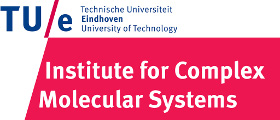Team:TU-Eindhoven/Wetlab
From 2013.igem.org
Sanderlr92 (Talk | contribs) |
JacquesErnes (Talk | contribs) |
||
| (3 intermediate revisions not shown) | |||
| Line 4: | Line 4: | ||
<html><h1>Labwork Description</h1></html> | <html><h1>Labwork Description</h1></html> | ||
| - | Within the scope of the 2013 iGEM competition our goal was to create tumor targeting | + | Within the scope of the 2013 iGEM competition our goal was to create a bacterial tumor targeting device which, upon the sensing of a tumor, would produce proteins that could be used for the imaging thereof. To achieve this, it was necessary to design and develop a system that both targeted and reacted to tumors, producing the proteins that enable tumor imaging via MRI. In order to develop such a system, we first defined the [[ Team:TU-Eindhoven/Preparation | '''DNA CONSTRUCTS''']] that constitute the basis of all our lab work. To ensure that the best possible protein was used for the tumor imaging it was decided to design and produce multiple different proteins. Once able to generate a CEST contrast agent device, we [[ Team:TU-Eindhoven/CESTAgentTesting |'''TESTED THIS CONTRAST AGENT''']] by expressing each of the separate proteins and comparing their relative contrast. The measurement of the contrast produced by each of the proteins was done using an [[ Team:TU-Eindhoven/MRIProcessing | '''MRI SCANNER''']]. We also evaluated the ability of our device to generate a contrast agent under hypoxic conditions by performing an [[ Team:TU-Eindhoven/AnearobicTesting |'''ANAEROBIC TEST''']] with the FNR Promoter. The complete procedures and protocols performed during the lab work can be found on the [[ Team:TU-Eindhoven/LabJournal |'''LAB JOURNAL''']]. |
Latest revision as of 12:08, 26 October 2013



Labwork Description
Within the scope of the 2013 iGEM competition our goal was to create a bacterial tumor targeting device which, upon the sensing of a tumor, would produce proteins that could be used for the imaging thereof. To achieve this, it was necessary to design and develop a system that both targeted and reacted to tumors, producing the proteins that enable tumor imaging via MRI. In order to develop such a system, we first defined the DNA CONSTRUCTS that constitute the basis of all our lab work. To ensure that the best possible protein was used for the tumor imaging it was decided to design and produce multiple different proteins. Once able to generate a CEST contrast agent device, we TESTED THIS CONTRAST AGENT by expressing each of the separate proteins and comparing their relative contrast. The measurement of the contrast produced by each of the proteins was done using an MRI SCANNER. We also evaluated the ability of our device to generate a contrast agent under hypoxic conditions by performing an ANAEROBIC TEST with the FNR Promoter. The complete procedures and protocols performed during the lab work can be found on the LAB JOURNAL.
 "
"



